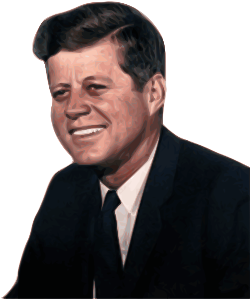On May 20, 2018, at the John F. Kennedy Presidential Library and Museum in Boston, Mass., the 2018 Profile in Courage Award was presented to former New Orleans Mayor Mitch Landrieu. He was honored “for his leadership in relocating four of the Confederate monuments in New Orleans while offering candid, clear and compassionate reflections on the moment and its place in history.” Landrieu’s tenure as mayor has only recently come to an end; at the moment, he appears to have no clear plans for his political future, but he is definitely a Democrat to watch in the coming months and years. 
While Landrieu, a New Orleans native from a prominent political Louisiana family, was elected mayor in 2010, he had held a number of elected offices previously. He was elected to the Louisiana House of Representatives in 1987 and served there for 16 years. In 2003, he launched his first bid for statewide office, Lieutenant Governor. “In a field of six candidates, Landrieu garnered 53 percent of the vote and won outright in the Louisiana open primary, thus avoiding a general election.” In the 2010 New Orleans mayoral election, Landrieu threw in his hat to succeed term-limited Ray Nagin. Landrieu earned approximately 67% of the vote and had wide support across racial and demographic lines; he “is the first white person to hold the post since his father left office in 1978.”
As the Kennedy Library noted in conjunction with Landrieu’s Profile in Courage Award, “In June 2015, more than a year into his second term, nine members of the Emanuel African Methodist Episcopal Church in Charleston, South Carolina were killed by a white supremacist. Responding to the racially motivated violence with a dramatic decision of conscience, Landrieu boldly sought and secured city council support to remove four of New Orleans’ Confederate monuments – statues of Robert E. Lee, Jefferson Davis and Confederate General P.G.T. Beauregard, and one dedicated to those who opposed Reconstruction. While civil rights advocates had long called for the removal of New Orleans’ Confederate monuments, Landrieu was the first elected official to take on the controversial issue directly by conceiving and implementing a plan to remove them.
“The move was met with fierce opposition. Landrieu faced impassioned constituents who argued the statues represented an important part of the state’s identity and culture. Defenders of the monuments tried every possible legal channel to halt their removal. Confederate sympathizers from around the country and threats sent from across the internet added fuel to the debate. Contractors who signed up for the removal received multiple death threats, and one of them had his car firebombed.
“After a bitterly fought battle, in May 2017, the fourth of the longstanding statues was removed. While the monuments were dismantled at night to protect the contractors, Landrieu did not allow the significance of the moment to go unnoticed. He made a sweeping speech candidly reflecting on the history of slavery and brutality that undergirded the monuments, and appealing to public conscience to reckon truthfully with America’s enduring legacy of racism.”
Landrieu’s powerful speech on May 23, 2017, can be found on the website of the Southern Poverty Law Center (SPLC). “The SPLC joined a number of grassroots organizers including Take ‘Em Down NOLA and filed an amicus brief supporting the removal of the monuments. The SPLC has also catalogued the number of publicly supported symbols of the Confederacy around the country and the number of symbols removed since the Charleston massacre.”
Landrieu’s speech was fact-based and eloquent; select quotes are highlighted here:
“New Orleans was America’s largest slave market, a port where hundreds of thousands of souls were bought, sold, and shipped up the Mississippi River to lives of forced labor, of misery, of rape, of torture. America was the place where nearly 4000 of our fellow citizens were lynched, 540 alone in Louisiana; where the courts enshrined “separate but equal”; where Freedom riders coming to New Orleans were beaten to a bloody pulp. So when people say to me that the monuments in question are history, well, what I just described is real history as well, and it is the searing truth.
“And it immediately begs the questions, why there are no slave ship monuments, no prominent markers on public land to remember the lynchings or the slave blocks; nothing to remember this long chapter of our lives; the pain, the sacrifice, the shame … all of it happening on the soil of New Orleans. So for those self-appointed defenders of history and the monuments, they are eerily silent on what amounts to this historical malfeasance, a lie by omission.”
“The historic record is clear: The Robert E. Lee, Jefferson Davis, and P.G.T. Beauregard statues were not erected just to honor these men, but as part of the movement which became known as The Cult of the Lost Cause. This ‘cult’ had one goal—through monuments and through other means—to rewrite history to hide the truth, which is that the Confederacy was on the wrong side of humanity [bold type added]. First erected over 166 years after the founding of our city and 19 years after the end of the Civil War, the monuments that we took down were meant to rebrand the history of our city and the ideals of a defeated Confederacy. It is self-evident that these men did not fight for the United States of America. They fought against it. … These monuments purposefully celebrate a fictional, sanitized Confederacy, ignoring the death, ignoring the enslavement and the terror that it actually stood for.”
“After the Civil War, these statues were a part of that terrorism as much as a burning cross on someone’s lawn; they were erected purposefully to send a strong message to all who walked in their shadows about who was still in charge in this city. Should you have further doubt about the true goals of the Confederacy, in the very weeks before the war broke out, the Vice President of the Confederacy, Alexander Stephens, made it clear that the Confederate cause was about maintaining slavery and white supremacy. He said in his now famous ‘corner-stone speech’ that the Confederacy’s ‘cornerstone rests upon the great truth, that the negro is not equal to the white man; that slavery—subordination to the superior race—is his natural and normal condition. This, our new government, is the first in the history of the world based upon this great physical, philosophical, and moral truth.’”
 “To literally put the Confederacy on a pedestal in our most prominent places of honor is an inaccurate recitation of our full past. It is an affront to our present, and it is a bad prescription for our future. History cannot be changed. It cannot be moved like a statue. What is done is done. The Civil War is over, and the Confederacy lost and we are better for it. Surely we are far enough removed from this dark time to acknowledge that the cause of the Confederacy was wrong.”
“To literally put the Confederacy on a pedestal in our most prominent places of honor is an inaccurate recitation of our full past. It is an affront to our present, and it is a bad prescription for our future. History cannot be changed. It cannot be moved like a statue. What is done is done. The Civil War is over, and the Confederacy lost and we are better for it. Surely we are far enough removed from this dark time to acknowledge that the cause of the Confederacy was wrong.”
“We have not erased history [by removing the statues]; we are becoming part of the city’s history by righting the wrong image these monuments represent and crafting a better, more complete future for all our children and for future generations. And unlike when these Confederate monuments were first erected as symbols of white supremacy, we now have a chance to create not only new symbols, but to do it together, as one people. In our blessed land we all come to the table of democracy as equals. We have to reaffirm our commitment to a future where each citizen is guaranteed the uniquely American gifts of life, liberty and the pursuit of happiness.”
“After decades of public debate, of anger, of anxiety, of anticipation, of humiliation and of frustration. After public hearings and approvals from three separate community led commissions. After two robust public hearings and a 6–1 vote by the duly elected New Orleans City Council. After review by 13 different federal and state judges. The full weight of the legislative, executive, and judicial branches of government has been brought to bear and the monuments, in accordance with the law, have been removed. So now is the time to come together and heal and focus on our larger task. Not only building new symbols, but making this city a beautiful manifestation of what is possible and what we as a people can become.”
“The Confederacy was on the wrong side of history and humanity. It sought to tear apart our nation and subjugate our fellow Americans to slavery. This is the history we should never forget and one that we should never again put on a pedestal to be revered. As a community, we must recognize the significance of removing New Orleans’ Confederate monuments. It is our acknowledgment that now is the time to take stock of, and then move past, a painful part of our history.”
The Profile in Courage Award is administered by the John F. Kennedy Library Foundation. The award is presented each May at a ceremony at the John F. Kennedy Presidential Library and Museum in connection with the observance of President Kennedy’s birthday on May 29. Send congratulations to Mitch Landrieu!

